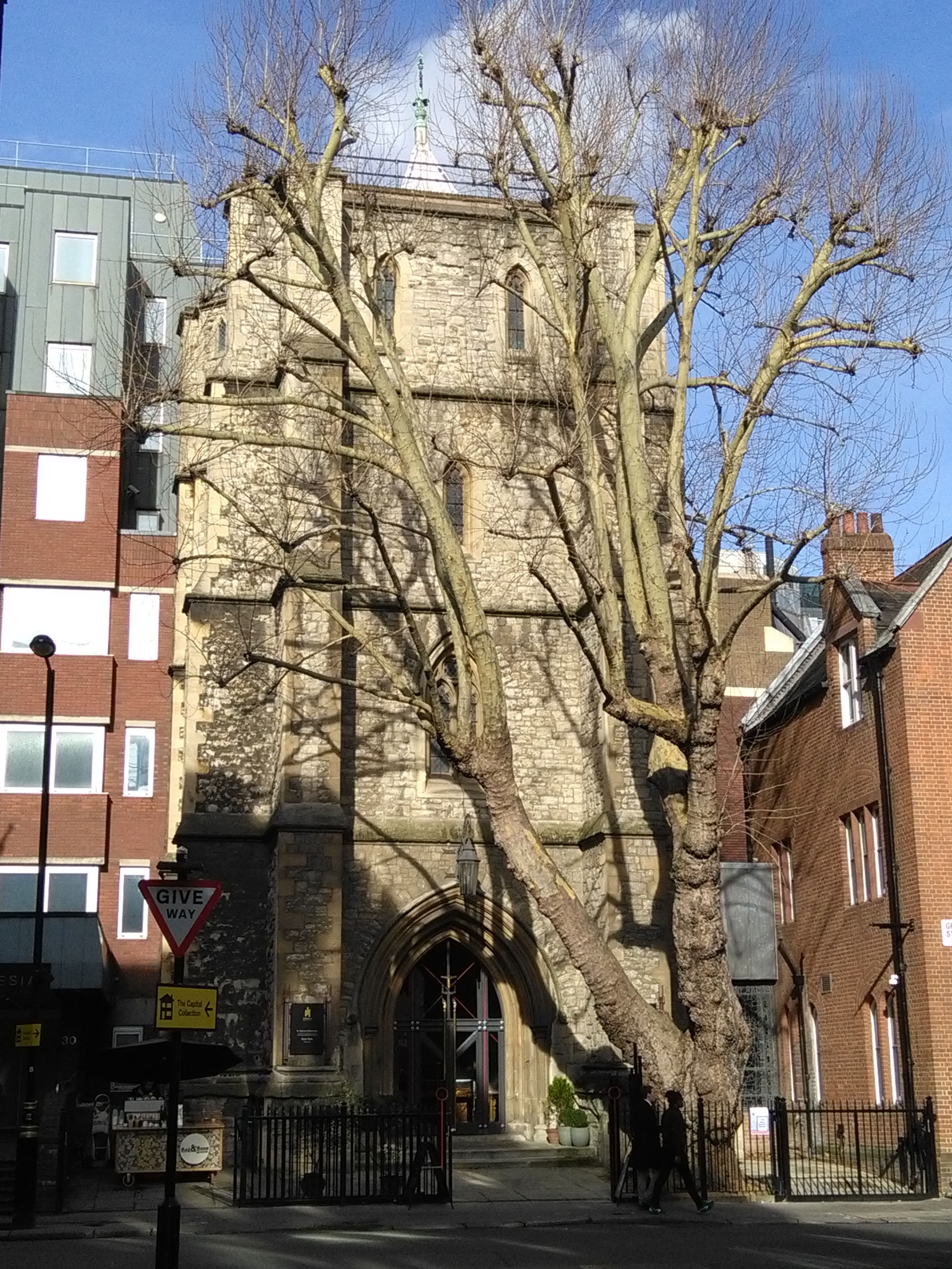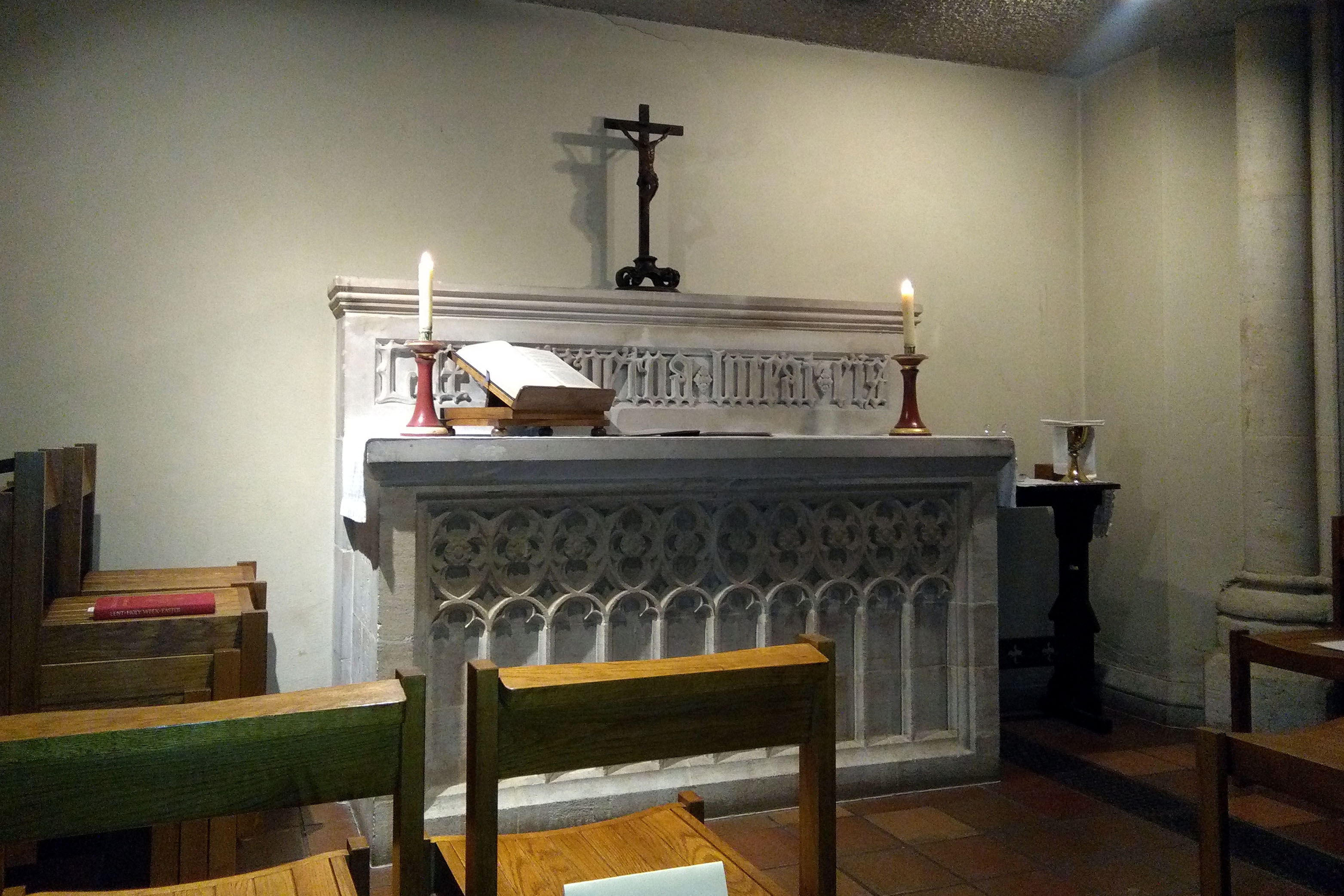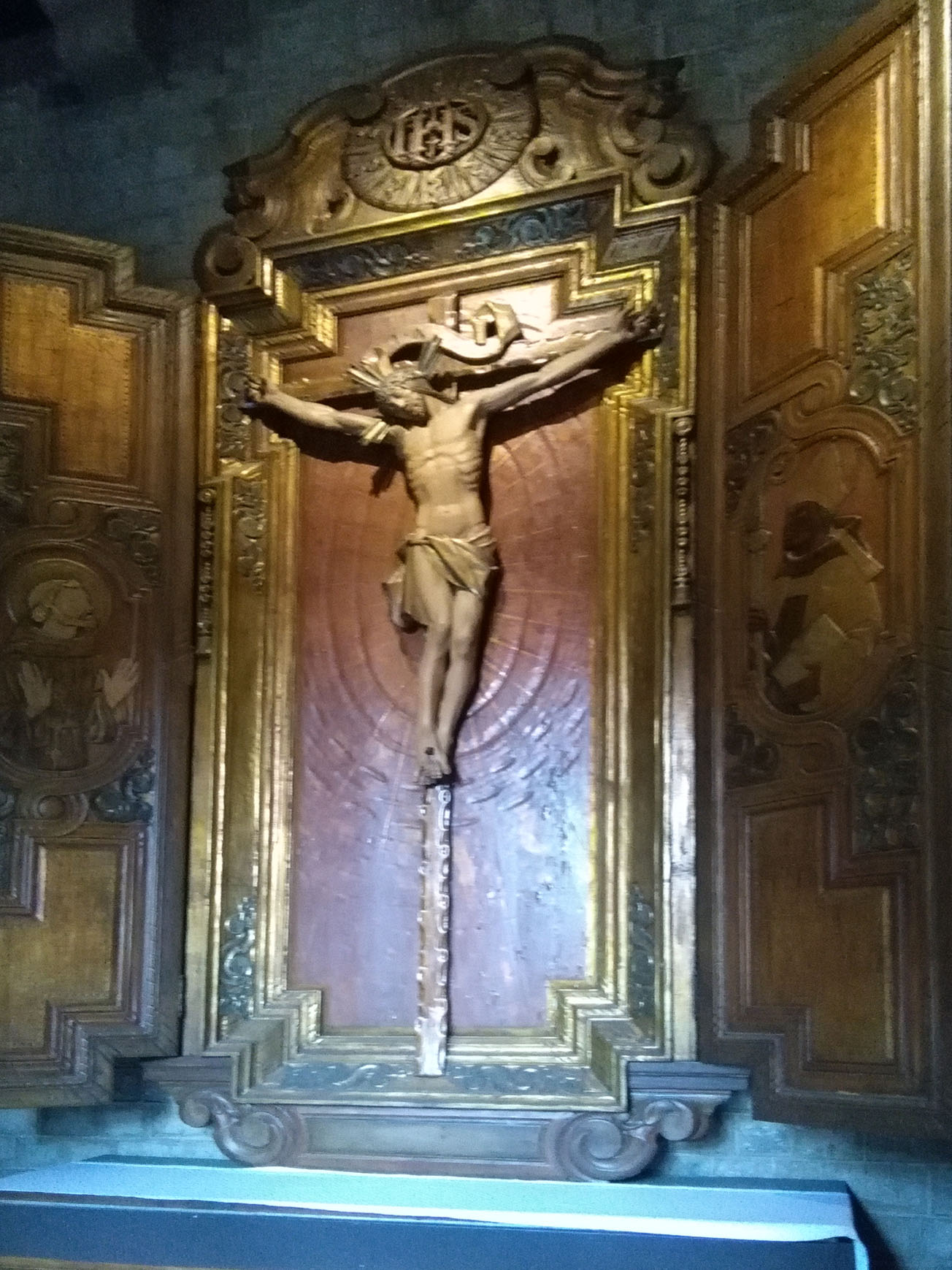| |
 |
 |
 |
| Comment on this report, or find other reports. |
 |
| Our Mystery Worshippers are volunteers who warm church pews for us around the world. If you'd like to become a Mystery Worshipper, start here. |
 |
| Find out how to reproduce this report in your church magazine or website. |
|
|
| 3280: St Matthew’s, Westminster, London |
 |
 |
 |
Mystery Worshipper: Ken T. Poste.
The church: St Matthew’s, Westminster, London.
Denomination: Church of England, Diocese of London.
The building: The original church was built between 1849 and 1851 to the design of Sir George Gilbert Scott, with a later addition of the Lady chapel by Sir Ninian Comper. The building was almost totally destroyed by a fire in 1977, with the rebuilt church being dedicated in 1984. Some of the damaged, yet surviving, stained glass figures were placed in new settings. This particular service met in St Michael’s Chapel, which houses a stone altar by Gothic Revivalist George Frederick Bodley, who had studied under George Gilbert Scott. On one side of the chapel is an iron grille, though which one can glimpse some of the main hall of the church, including the golden reredos and the high altar.
The church: St Matthew's was originally meant to accommodate the overspill from nearby St John the Evangelist in Smith Square (now decommissioned as a church and used primarily as a concert venue) due to the high population density of the area. Probably the most famous member of the church is its author in residence, former Conservative MP and convicted perjurer Jonathan Aitken. It was during his time in prison that he became a Christian, having first attended an Alpha course. He later studied theology at Wycliffe Hall, Oxford.
The neighbourhood: When the church was built, the area was described by Charles Dickens as “the Devil’s acre,” being overcrowded with very poor housing and rife with pickpockets. The church sits just a few yards from the more famous landmarks of Westminster, including the Houses of Parliament and the Abbey, though it would be easy to miss if you weren’t looking for it.
The cast: The service was led by the Revd Peter Hanaway, assistant priest, and pastoral assistant Edwin Wilton-Morgan.
The date & time: Ash Wednesday, 14 February 2018, 8.00am.
What was the name of the service?
Mass with Imposition of Ashes.
How full was the building?
The phrase “where two or three are gathered” came to mind. At the start of the service I was the only person in the congregation, being outnumbered by the priest and his assistant. However, after about five minutes, two other people came in.
Did anyone welcome you personally?
Initially, no. I entered the church and wandered around looking lost. There was a sign that said morning prayer was upstairs, but just as I was about to head up, the pastoral assistant saw me looking lost and asked if I’d come for the Ash Wednesday service. When I answered in the affirmative he invited me into the chapel.
Was your pew comfortable?
We sat on wooden chairs that were about as comfortable as a pew.
How would you describe the pre-service
atmosphere?
Lonely. I was the only one there, rubbing my hands together to warm them up, as it was a bit nippy outside.
What were the exact opening words of the
service?
"In the name of the Father, and of the Son, and of the Holy Spirit. Amen."
What books did the congregation use during the
service?
We used a little booklet of liturgy.
What musical instruments were played?
There was no music played. Only a four-chime altar bell that was rung from time to time.
Did anything distract you?
It was a little disconcerting being the only person there for a while, Though the lady who came and sat behind me didn’t need to use the booklet as she seemed to have memorised the entire liturgy, which I found quite impressive.

Was the worship stiff-upper-lip, happy clappy, or
what?
I would describe it as solemn and quiet. There were bells but no smells, although there was a faint odour of incense lingering in the air. For much of the service the priest remained facing the stone altar with his back to the congregation. It being Ash Wednesday, we had crosses made of ash put on our foreheads. Afterwards, we shared communion.
Exactly how long was the sermon?
No sermon.
Which part of the service was like being in
heaven?
Being such a small community, it felt like we were part of something special. A select gathering of faithfulness that, having worshipped in private quiet, went out from that place into the world with a very prominent sign of our faith emblazoned on our heads.
And which part was like being in... er... the other place?
A minor slip of the tongue on the part of the priest during the reading.
What happened when you hung around after the service looking lost?
There wasn’t really much opportunity to. I spoke briefly with Father Peter but then had to head off elsewhere.
How would you describe the after-service
coffee?
There were no after-service refreshments.
How would you feel about making this church your regular (where 10 = ecstatic, 0 = terminal)?
7 – It was a lovely service and it would be a lovely church for those of a high church persuasion.

Did the service make you feel glad to be a
Christian?
Glad isn’t quite the right word. It reminded me that the Christian life entails repentance, faith and obedience.
What one thing will you remember about all this in seven days' time?
The ashing. It was my first time ever to such a service. Though I spent the rest of the day having people ask me, “Do you know you’ve got mud on your forehead?” |
|
|
 |
 |
 |
| We rely on voluntary donations to stay online. If you're a regular visitor to Ship of Fools, please consider supporting us. |
 |
 |
 |
| The Mystery Pilgrim |
 |
| One of our most seasoned reporters makes the Camino pilgrimage to Santiago de Compostela in Spain. Read here. |
 |
 |
 |
| London churches |
 |
| Read reports from 70 London churches, visited by a small army of Mystery Worshippers on one single Sunday. Read here. |
| |
|
|
|
|


